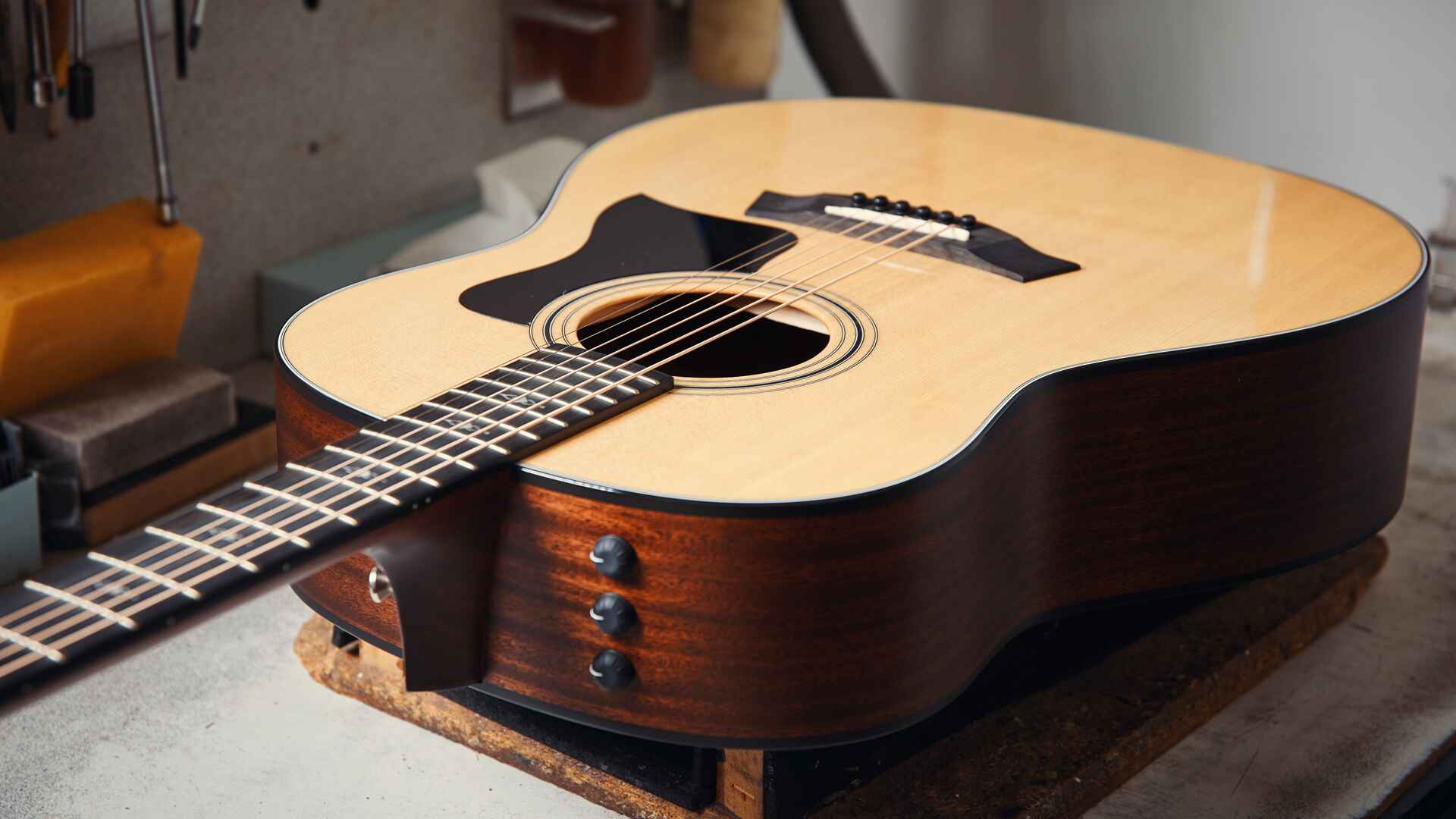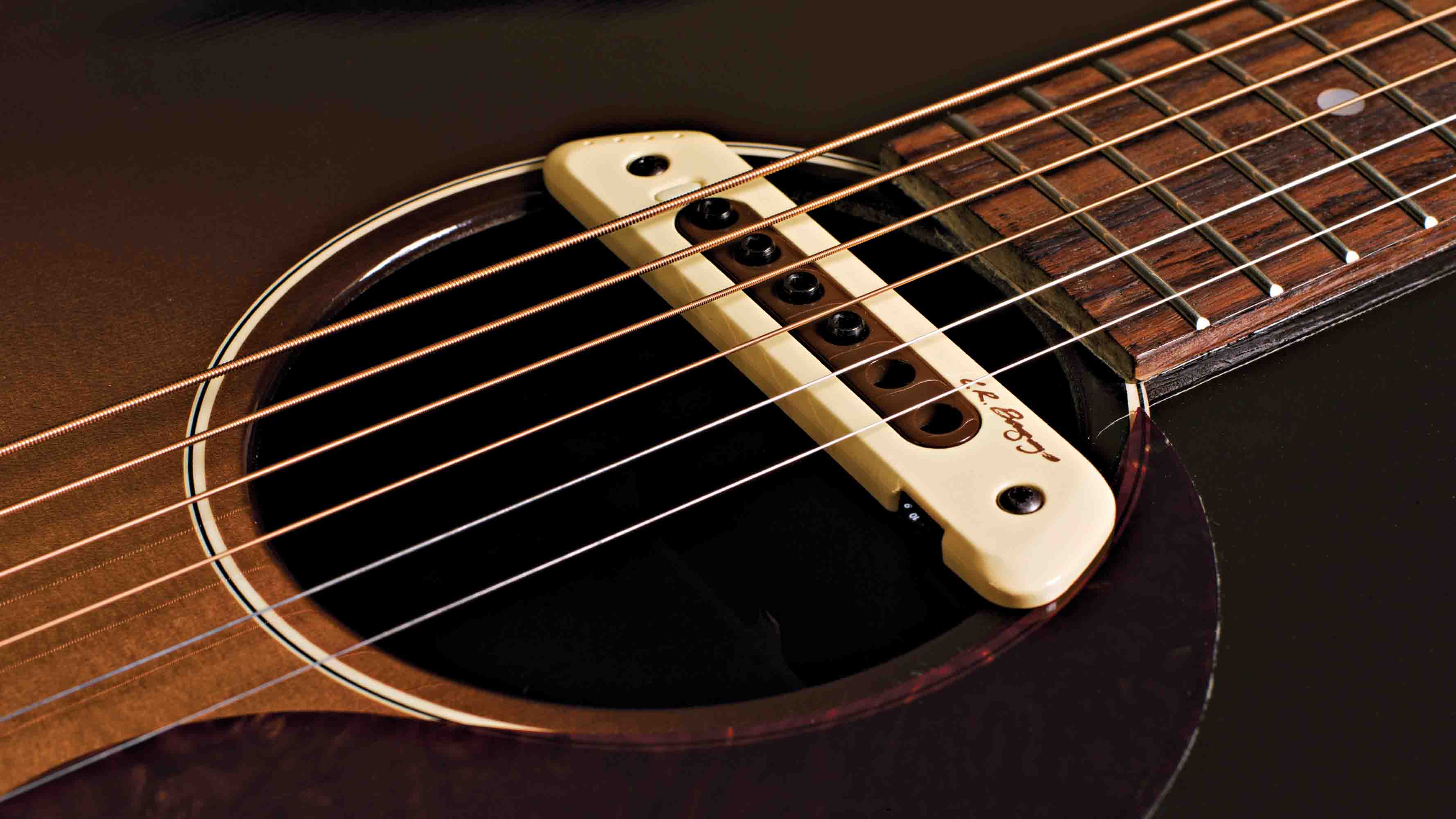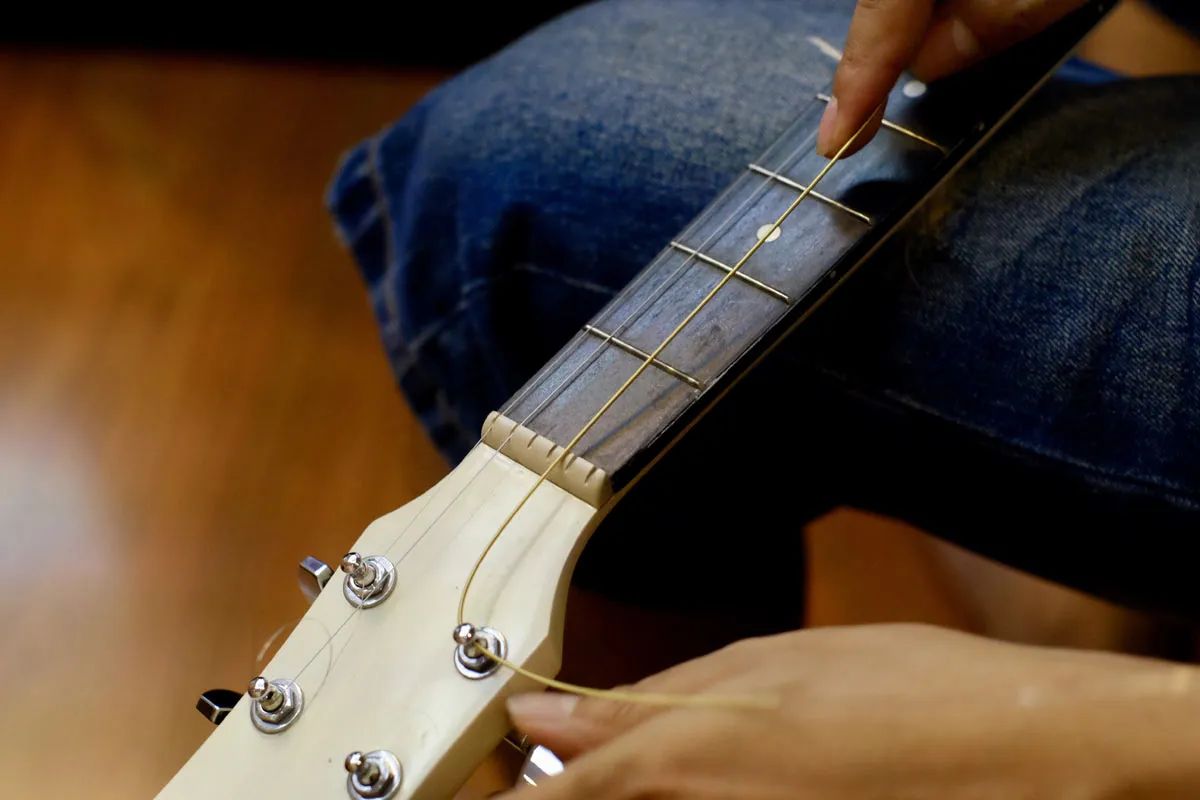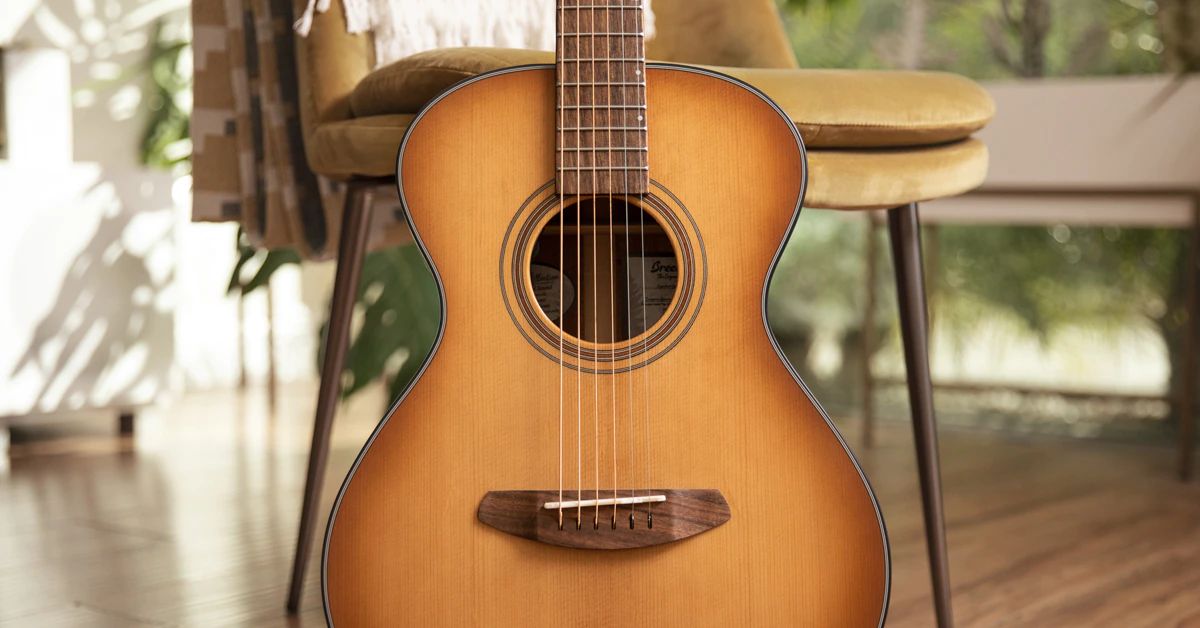Introduction
Welcome to the world of playing acoustic guitar! Whether you’re a beginner or a seasoned guitarist, one question that often arises is: how often should you change your acoustic guitar strings?
The lifespan of your acoustic guitar strings can greatly impact the sound, playability, and overall performance of your instrument. Over time, strings can accumulate dirt, sweat, and grime, which can result in a dull tone and make playing more difficult. Therefore, knowing when to change your strings is crucial to maintain optimal sound quality and playability.
Several factors come into play when determining how often you should change your acoustic guitar strings. These factors include your playing frequency, the type of strings you use, and the overall care you take in maintaining your instrument. By understanding these factors and the signs that indicate it’s time for a string change, you’ll be able to keep your guitar sounding its best.
In this article, we’ll explore the various factors that affect string longevity and discuss the signs that indicate it’s time for a string change. We’ll also provide guidelines for how often you should change your acoustic guitar strings based on different player levels: casual players, regular players, and professional players. Additionally, we’ll offer some tips for maintaining string longevity, so you can get the most out of your strings.
So, whether you strum your guitar for fun, play regularly for enjoyment, or perform professionally, read on to discover the secrets of when and how often you should change your acoustic guitar strings.
Factors Affecting String Lifespan
The lifespan of your acoustic guitar strings can vary depending on several factors. Understanding these factors is essential in determining how often you should change your strings.
1. Playing Frequency: One of the most significant factors influencing string lifespan is how often you play your guitar. Frequent playing leads to faster string deterioration. If you practice or perform daily, your strings will likely wear out faster compared to someone who plays occasionally.
2. Playing Style: The way you play your guitar also affects how long your strings last. Aggressive strumming, bending strings, and heavy picking can cause more wear and tear, shortening string lifespan. On the other hand, a lighter playing style may result in longer-lasting strings.
3. String Quality: The quality of the strings you use makes a difference in their longevity. High-quality strings tend to last longer and maintain their tonal characteristics over time. Cheaper strings may lose their brightness and tone more quickly, necessitating more frequent string changes.
4. Climate and Environment: The climate and environment in which you live and play can also impact the lifespan of your strings. High humidity levels can cause strings to rust and corrode faster, while dry conditions can lead to increased string tension and potential breakage. Additionally, playing in dusty or smoky environments can decrease string lifespan.
5. Maintenance and Care: How well you maintain and care for your strings can significantly extend their lifespan. Wiping down your strings after each playing session, using astringent or string cleaner, and properly storing your guitar in a case can help prevent dirt and grime buildup, ultimately prolonging string life.
Remember, these factors are interconnected, and each one plays a role in determining how often you should change your acoustic guitar strings. By considering these factors and being aware of the signs that indicate it’s time for a string change, you can make informed decisions about maintaining your guitar’s performance and sound quality.
Signs It’s Time to Change Your Acoustic Guitar Strings
Knowing when to change your acoustic guitar strings is essential for maintaining optimal sound quality and playability. While there is no set timeframe for changing strings, certain signs indicate that it’s time for a string change:
1. Dull or Muted Sound: If your guitar sounds dull, lacks brightness, or has a muted tone, it may be due to worn-out strings. Over time, strings lose their clarity and crispness, resulting in a less vibrant sound. Changing your strings can instantly revive the guitar’s resonance and improve overall tonal quality.
2. Noticeable Wear and Tear: Inspect your strings regularly for visible signs of wear and tear. Look for areas where the metal is corroded or discolored, as this indicates that the strings have reached the end of their life span. Additionally, if you detect any fraying, unraveled sections, or dents in the strings, it’s a clear indication that replacement is needed.
3. Difficulty Staying in Tune: When strings become old and worn, they lose their ability to hold tune properly. If your guitar is constantly going out of tune, even after tuning it correctly, it may be a sign that your strings need to be changed. New strings will provide better stability and help maintain accurate tuning.
4. Increased Playability Issues: As strings wear down, they become more challenging to play. You may experience buzzing or fretting out when pressing down on the strings, resulting in poor intonation and diminished playability. Changing your strings can alleviate these issues, making it easier to fret notes and improving the overall feel of the instrument.
5. Lack of Sustain: If you notice a significant decrease in sustain or the ability of your guitar’s notes to ring out, it could be a sign that your strings have lost their resonance. Changing to fresh strings can enhance sustain and ensure that your guitar’s notes ring out clear and true.
6. Extended Period of Use: Even if your strings don’t show visible signs of wear, it’s recommended to change them periodically based on usage. Strings that have been on your guitar for an extended period, even without excessive wear, can lose their original tone and playability. Changing them regularly, even if they appear fine, ensures consistent sound quality.
By keeping an eye out for these signs, you can determine when it’s time to change your acoustic guitar strings. Remember that individual preferences and playing styles may also influence when you decide to replace your strings. Trust your ears and the overall feel of your guitar to guide you in making the best decision for optimal sound and performance.
String Changing Frequency for Casual Players
Casual players, who pick up the guitar occasionally for fun or leisure, may wonder how often they should change their acoustic guitar strings. While there is no exact timeframe, a general guideline can help in determining when it’s time for a string change.
For casual players who play their acoustic guitar occasionally, such as a few times a month or less, changing strings every 6-12 months is typically sufficient. Since the strings are not being subjected to frequent and intense playing, they tend to last longer. However, it’s important to note that this is just a general recommendation, and individual circumstances may vary.
It’s important for casual players to pay attention to changes in the sound and playability of their guitar. If the guitar starts to sound dull, lacks brightness, or has difficulty staying in tune, it may be a sign that the strings need to be changed, even if they haven’t reached the typical timeframe. Trust your ears and the overall feel of the instrument to guide you in making the decision.
Additionally, factors such as climate, storage conditions, and the level of maintenance can impact string longevity. If you live in a humid environment or don’t store your guitar properly, you may need to change your strings more frequently to maintain optimal sound quality.
Ultimately, it is important for casual players to find the right balance between string longevity and maintaining a good playing experience. Changing strings regularly ensures that you have fresh, vibrant strings that enhance the sound and playability of your guitar, even if you don’t play as frequently as a professional or regular player.
Experimenting with different string brands and gauges can also help you find the right combination that suits your playing style and preferences. Some players may find that certain brands or materials last longer and provide better tone, while others may prefer the feel and sound of fresh strings more often.
Remember, as a casual player, the most important thing is to enjoy playing your guitar. By periodically changing your strings and paying attention to the signs of wear, you can ensure that your instrument delivers the best possible sound and performance for your occasional jam sessions or leisurely strumming sessions.
String Changing Frequency for Regular Players
For regular players who dedicate more time to practicing and playing their acoustic guitar, it becomes important to consider the frequency of string changes. Regular players often have a greater impact on string longevity due to their increased playing time and intensity.
As a general guideline, regular players should consider changing their acoustic guitar strings every 2-3 months. This timeframe allows for maintaining optimal sound quality and playability. However, it’s important to note that individual circumstances can vary, and some players may find that their strings need to be changed more frequently based on their specific playing style and preferences.
Regular players should pay close attention to the signs that indicate it’s time for a string change. If the guitar starts to sound dull, the strings lack brightness, or tuning stability becomes challenging, it’s a good indication that fresh strings are needed. Additionally, regular players may notice increased wear and tear on their strings due to extended playing sessions, which can also contribute to a decrease in sound quality.
Factors such as climate, environmental conditions, and the level of maintenance can also impact string longevity for regular players. Playing in a humid environment can lead to faster corrosion and rust, while dry conditions may cause increased string tension and potential breakage. Properly maintaining and cleaning your strings after each playing session can help prolong their lifespan.
Regular players may also consider experimenting with different string brands, materials, and gauges to find the ideal combination for their playing style. Some brands and materials can offer increased durability and longevity, while others may provide a brighter tone or enhanced playability. Finding the right balance between longevity and sound quality is key.
Lastly, it’s essential for regular players to listen to their guitar and trust their intuition when it comes to string changes. Pay attention to how the strings feel and sound, as this can guide you in determining when it’s time for a fresh set. By changing your strings regularly, you ensure that you’re getting the best performance from your guitar and enhancing your overall playing experience as a regular player.
String Changing Frequency for Professional Players
For professional players who rely on their acoustic guitar for regular performances and recordings, string changing frequency becomes even more crucial. Professional players demand the highest level of performance, tonal quality, and reliability from their instrument, making string maintenance a top priority.
As a professional player, it is recommended to change your acoustic guitar strings every 1-2 months. This relatively short timeframe ensures that you have fresh, vibrant strings that provide excellent sound quality and playability for performances and recording sessions.
Professional players frequently push their strings to their limits, subjecting them to intense playing, bending, and frequent stage use. Over time, strings lose their tonal clarity, sustain, and consistency, which can impact professional-level performances. By changing strings regularly, you can ensure that you have the necessary tonal qualities and responsiveness from your instrument.
Professional players should also pay close attention to the signs indicating it’s time for a string change. If the strings start to sound dull, lack brightness, or have difficulty staying in tune, it’s a clear indication that fresh strings are required. Maintaining a consistent level of sound quality and ensuring optimal playability are paramount for professional-level performances.
Factors such as climate, environmental conditions, and the level of instrument maintenance should be taken into consideration as well. Professional players often perform in various locations and climates, which can impact string longevity. Ensuring that your guitar is properly humidified, cleaned, and stored can help prolong string life and maintain optimal performance.
Professional players often have a preferred string brand, material, and gauge that they find suits their playing style and tonal preferences best. Experimentation and finding the perfect match between longevity and sound quality is key for professional players who rely on their guitar for their livelihood.
Additionally, professional players may choose to change their strings more frequently for specific performances or recordings. Fresh strings can provide a more dynamic and articulate sound, allowing for greater tonal expression and control during important events or studio sessions.
Ultimately, for professional players, changing guitar strings consistently is essential for maintaining a high level of performance, tonal quality, and reliability. By investing in fresh strings regularly, you can ensure that you’re getting the best possible sound and playability from your instrument, helping you deliver exceptional performance on stage and in the studio.
Tips for Maintaining String Longevity
Maintaining string longevity is not only beneficial for the lifespan of your acoustic guitar strings but also for the overall sound quality and playability of your instrument. Here are some tips to help you get the most out of your strings:
1. Wipe down your strings: After every playing session, take a clean cloth and wipe down your strings to remove dirt, sweat, and oils. This helps prevent the buildup of grime, which can contribute to string corrosion and dullness.
2. Clean your hands before playing: Washing your hands before playing the guitar can help minimize the transfer of oils and dirt onto the strings. Clean hands reduce the amount of residue that can accumulate on the strings, prolonging their life.
3. Use string cleaner: Occasionally, use a string cleaner or a specialized cleaning solution specifically designed for guitar strings. Apply it to a cloth and gently run it along the length of each string to remove built-up grime and oils.
4. Store your guitar properly: When you’re not playing your guitar, store it in its case or a guitar stand with a neck support. Proper storage helps protect the strings from exposure to moisture, dust, and other environmental factors that accelerate corrosion.
5. Consider a string lubricant: Using a high-quality string lubricant on the nut and bridge can help reduce friction and prolong string life. Lubricants like graphite or nut sauce can enhance smooth string movement and prevent premature string wear.
6. Monitor and adjust humidity levels: Fluctuations in humidity can affect string tension and increase the likelihood of string breakage. Use a hygrometer to monitor the humidity levels around your guitar and consider using a humidifier or dehumidifier to maintain a stable environment.
7. Avoid excessive bending and aggressive strumming: Excessive string bending and aggressive strumming can put extra stress on the strings and lead to faster wear and breakage. Be mindful of your playing technique and try to strike a balance between expression and string longevity.
8. Change your strings regularly: Even with proper care, guitar strings will eventually wear out. Develop a habit of regularly changing your strings based on your playing frequency and the signs of wear and tear discussed earlier in this article.
By following these tips, you can significantly extend the life of your acoustic guitar strings and maintain their optimal sound quality and playability. Remember that each player’s circumstances and preferences may differ, so it’s essential to find a routine and maintenance approach that works best for you and your instrument.
Conclusion
Changing your acoustic guitar strings at the right time is essential for maintaining optimal sound quality and playability. The frequency of string changes varies depending on several factors, including playing frequency, playing style, string quality, climate, and maintenance. By understanding these factors and paying attention to the signs that indicate it’s time for a string change, you can keep your guitar sounding its best.
For casual players, changing strings every 6-12 months is generally sufficient. Regular players, on the other hand, should aim to change their strings every 2-3 months, while professional players may need to change strings as frequently as every 1-2 months. However, individual circumstances, playing style, and preferences can influence these recommendations.
Signs that indicate it’s time for a string change include a dull or muted sound, noticeable wear and tear, difficulty staying in tune, increased playability issues, lack of sustain, and extended periods of use. Trust your ears and the overall feel of your guitar to guide you in making the decision to change strings.
To maintain string longevity, wipe down your strings after each playing session, clean your hands before playing, and consider using a string cleaner. Properly storing your guitar, monitoring humidity levels, and avoiding excessive bending and aggressive strumming can also help prolong string life.
Ultimately, the goal is to find the right balance between string longevity and sound quality for your playing style and preferences. Experimenting with different string brands, materials, and gauges can help you find the perfect match for your acoustic guitar.
By following these guidelines and taking proper care of your acoustic guitar strings, you can ensure that your instrument delivers the best possible sound and playability. Whether you’re a casual player, regular player, or professional player, fresh strings will enhance your musical experience and allow you to express yourself to the fullest.

























